
Tiziano Vecelli or Vecellio, known in English as Titian, was an Italian (Venetian) painter during the Renaissance, considered the most important member of the 16th-century Venetian school. He was born in Pieve di Cadore, near Belluno. During his lifetime he was often called da Cadore, 'from Cadore', taken from his native region.
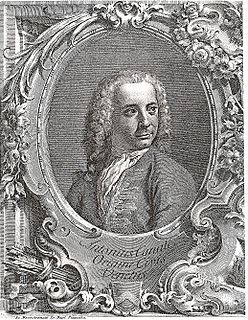
Giovanni Antonio Canal, commonly known as Canaletto, was an Italian painter from the Republic of Venice, considered an important member of the 18th-century Venetian school.

Gentile Bellini was an Italian painter of the school of Venice. He came from Venice's leading family of painters, and at least in the early part of his career was more highly regarded than his younger brother Giovanni Bellini, the reverse of the case today. From 1474 he was the official portrait artist for the Doges of Venice, and as well as his portraits he painted a number of very large subjects with multitudes of figures, especially for the Scuole Grandi of Venice, wealthy confraternities that were very important in Venetian patrician social life.

Giovanni Battista Tiepolo, also known as GiambattistaTiepolo, was an Italian painter and printmaker from the Republic of Venice who painted in the Rococo style, considered an important member of the 18th-century Venetian school. He was prolific, and worked not only in Italy, but also in Germany and Spain.
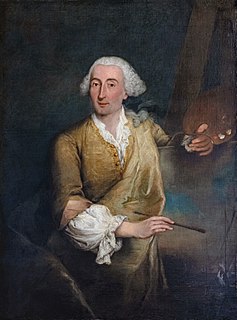
Francesco Lazzaro Guardi was an Italian painter, nobleman, and a member of the Venetian School. He is considered to be among the last practitioners, along with his brothers, of the classic Venetian school of painting.

Italian Journey is Johann Wolfgang von Goethe's report on his travels to Italy from 1786 to 1788 that was published in 1816 & 1817. The book is based on Goethe's diaries and is smoothed in style, lacks the spontaneity of his diary report and is augmented with the addition of afterthoughts and reminiscences.
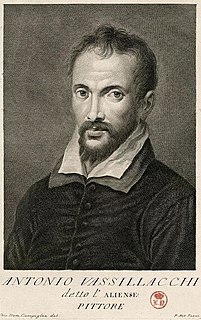
Antonio Vassilacchi, also called L'Aliense, was a Greek painter, who was active mostly in Venice and the Veneto.

Malcesine is a comune (municipality) on the eastern shore of Lake Garda in the Province of Verona in the Italian region Veneto, located about 120 kilometres northwest of Venice and about 40 kilometres northwest of Verona.

Iacopo Negretti, best known as Jacopo or Giacomo Palma il Giovane or simply Palma Giovane, was an Italian painter from Venice and a notable exponent of the Venetian school.

Alessandro Leone Varotari (4 April 1588 – 20 July 1649), also commonly known as Il Padovanino, was an Italian painter of the late-Mannerist and early-Baroque Venetian school, best known for having mentored Pietro Liberi, Giulio Carpioni, and Bartolommeo Scaligero. He was the son of Dario Varotari the Elder and the brother of painter Chiara Varotari, who accompanied him on his travels and assisted with his work.
Events from the year 1605 in art.

Lazzaro Bastiani was an Italian painter of the Renaissance, active mainly in Venice.

The Castel Vecchio Bridge or Scaliger Bridge is a fortified bridge in Verona, northern Italy, over the Adige River. The segmental arch bridge featured the world's largest span at the time of its construction.
Orazio Vecellio was an Italian painter of the Renaissance period, born in Venice around 1528. The son and pupil of Titian, he distinguished himself as a painter of portraits, some of which were thought little inferior to those of his father. He occasionally painted historical subjects; one of the most important was destroyed in the conflagration in the ducal palace at Venice. He neglected painting to devote himself to alchemy. He died of the plague in Venice, in 1576, the same year as his father.

The migration waves of Byzantine Greek scholars and émigrés in the period following the end of the Byzantine Empire in 1453, is considered by many scholars key to the revival of Greek studies that led to the development of the Renaissance humanism and science. These émigrés brought to Western Europe the relatively well-preserved remnants and accumulated knowledge of their own (Greek) civilization, which had mostly not survived the Early Middle Ages in the West. The Encyclopædia Britannica claims: "Many modern scholars also agree that the exodus of Greeks to Italy as a result of this event marked the end of the Middle Ages and the beginning of the Renaissance", although few scholars date the start of the Italian Renaissance this late.
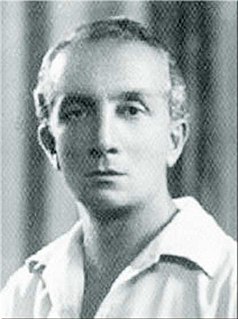
Massimo Scaligero, born Antonio Sgabelloni in Veroli, Italy (1906–1980) an Italian spiritual teacher and member of "Gruppo di Ur". A mentee of Julius Evola, Scaligero espoused fierce antisemitic views which were combined with Esotericism and Anthroposophy into a system of "integral racism" with the aim to bring Germany and Italy closer together in the same way it would the spiritual and the biological.

Palma Vecchio, born Jacopo Palma and also known as Jacopo Negretti, was a Venetian painter of the Italian High Renaissance. He was born at Serina Alta near Bergamo, a dependency of the Republic of Venice, but his recorded career all took place in or near Venice. He is called Palma Vecchio in English to distinguish him from Palma il Giovane, his great-nephew, who was also a painter.

Venetian painting was a major force in Italian Renaissance painting and beyond. Beginning with the work of Giovanni Bellini and his brother Gentile Bellini and their workshops, the major artists of the Venetian school included Giorgione, Titian, Tintoretto (1518–1594), Paolo Veronese (1528–1588) and Jacopo Bassano (1510–1592) and his sons. Considered to give primacy to colour over line, the tradition of the Venetian school contrasted with the Mannerism prevalent in the rest of Italy. The Venetian style exerted great influence upon the subsequent development of Western painting.
The Church of Corpus Domini in Venice was founded as a convent for Dominican nuns in 1394 under the patronage of John Dominici. It stood on the north side of the Grand Canal on the easternmost point where the canal opens into the sea, next to the church of St. Lucia. The convent was dissolved in 1810, and subsequently demolished. Later in the 19th century the whole quarter was demolished to make room for the St. Lucia railway station.
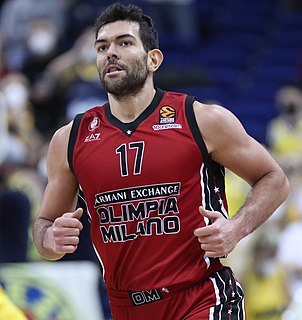
Giampaolo Ricci is an Italian basketball professional player for Olimpia Milano of the Italian Lega Basket Serie A (LBA) and Euroleague as a power forward. He has also played for the Italian national team.

















